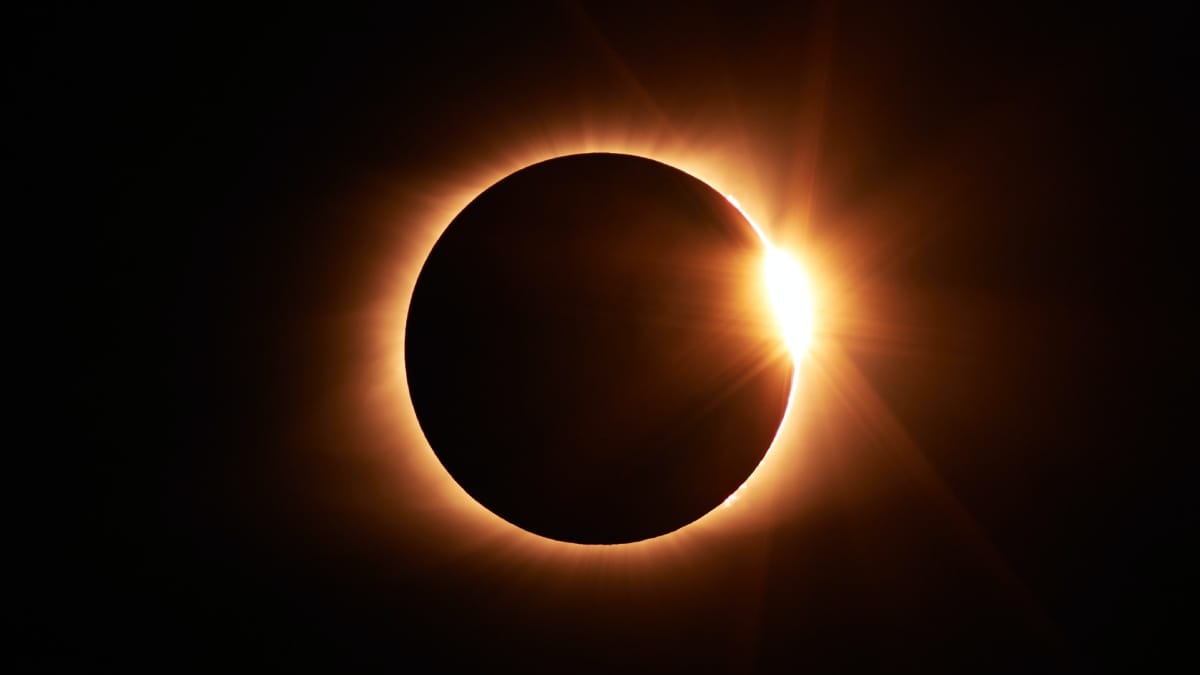During the Diwali festival on October 25, there will be a partial solar eclipse which will be visible from the city as well as from most parts of the country, astrophysicist Debi Prasad Duari said. The eastern metropolis, however, will be able to witness the partial solar eclipse, the second in 2022, for a very small duration, the celestial phenomenon will be better observed in the northern and western regions of the country, he said.
The eclipse will not be observed from northeastern India as the celestial phenomenon will be occurring after sunset in those regions, Duari said.
Apart from India, the October 25 partial cosmic affair will be visible from most parts of Europe, northern Africa, the Middle East, and parts of Asia, Duari elaborated.
“The partial solar eclipse will begin in Iceland at around 2:29 pm IST and will be seen at its maximum from Russia at 4:30 hours IST. It will end at around 6:32pm IST over the Arabian Sea,” he told PTI while sharing information on the celestial event.
“The eastern part of the country will see the partial eclipse only marginally, that also during the sunset. The northern and western part of the country is a better location to observe the partial eclipse with a better view and for a longer period of time.
“During the new moon (Amavasya) the Sun, Moon, and Earth almost come in a linear configuration, whereby from the Earth we can see the Moon without any sunlight falling on it. But at times, as on October 25, the Sun, Moon, and Earth will almost be on the same plane resulting in the moon appearing to cover the Sun partially for a period of time causing a partial solar eclipse,” he explained.
In and around the metropolis, the partial eclipse will begin at around 4:52pm, the maximum occurring at 5:01pm, and will cease to be seen at 5:03pm at the sunset, Duari said.
“Even at the maximum eclipse, only 4 percent of the lighted disc of the setting Sun will be covered by the Moon,” he said.
In the north Bengal town of Siliguri, the celestial phenomenon will be occurring between 4:41pm and 4:59pm and during the maximum eclipse (at around 4:56pm) about 8.91 percent of the Sun will be covered by the Moon’s disc, Duari stated.
“In New Delhi, it will commence at around 4:29pm and end with the sunset at 6:09pm with the maximum eclipse to occur at 5:42pm when the Sun will be obscured by the Moon by an amount of only 24.5 percent,” Duari said.
Jaisalmer in Rajasthan will experience the eclipse from 4:26pm to 6:09pm with the maximum at around 5:30pm. when the disc of the Sun will be obscured by 42.5 percent.
“In Mumbai, the eclipse will begin at 4:49pm with the maximum occurring at around 5:42pm. It will end at 6:09pm, when the Sun appears to go down the Arabian Sea at sunset. Here, the Sun’s disc will be covered by about 24.5 percent,” he added.
In southern and central India, the eclipse will be again observed just before sunset with Nagpur experiencing the eclipse from 4:49pm to 5:42pm. In Bengaluru, the eclipse will begin at 5:12pm, reaching its maximum at 5:49pm and ending at 5:55pm during the sunset. Chennai will have the eclipse during 5:14pm to 5:44pm, the astrophysicist said.
The next major solar eclipse to be visible from India will be an annular eclipse on May 21, 2031 when the annularity can be observed from a narrow patch of land in south India, he said.
Three years later, on March 20, 2034, the next total solar eclipse will be visible from India and the totality will be observed from the northernmost part of Kashmir.
On both occasions, the whole country will observe a partial eclipse of varying magnitude depending upon its geographical location, Duari said.
Another partial eclipse can be seen from the northern part of India on June 1, 2030.
Referring to the harm caused to the eyes by Sun’s rays during an eclipse, Duari cautioned the sky enthusiasts to take “extreme precaution” while observing it.
“Even if the degree of the partial eclipse is not appreciable in most of the country, extreme precaution has to be taken by everybody who wants to observe this cosmic event. The Sun’s rays can be very harmful for the eye and can become critical,” he said.
